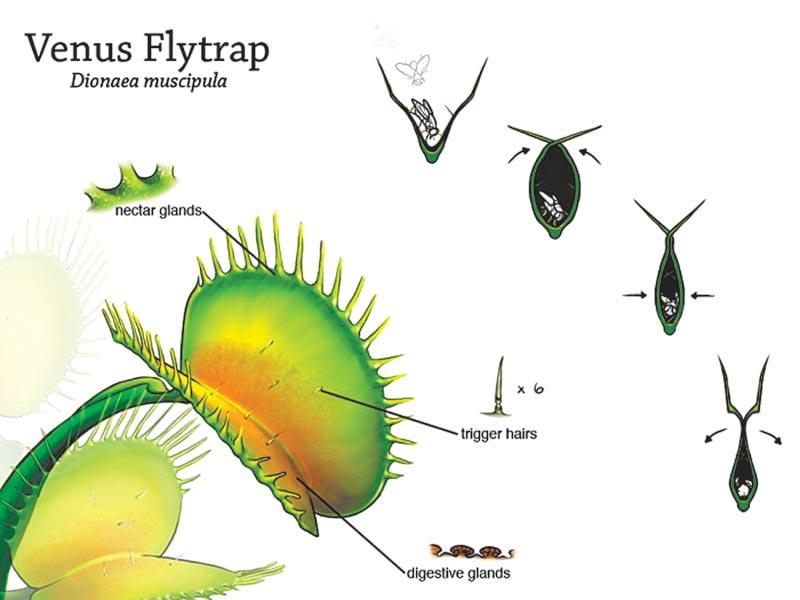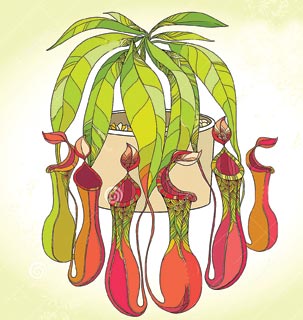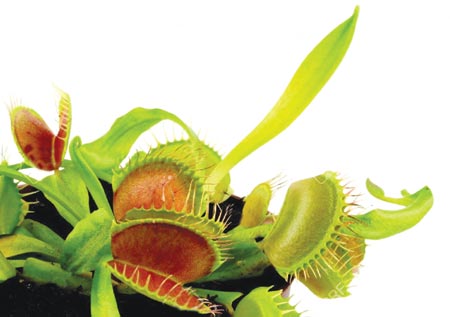
 From the smallest insect to the largest mammal, most animals eat plants. These animals are called herbivores. At first, you may think that plants just lay there and get eaten. They certainly can't get up and run away! However, plants have many defences to help them survive.
From the smallest insect to the largest mammal, most animals eat plants. These animals are called herbivores. At first, you may think that plants just lay there and get eaten. They certainly can't get up and run away! However, plants have many defences to help them survive.
Two types of defences:
Constitutive - A constitutive defence is one that is always present in the plant. Most plant defences are constitutive.
Induced - An induced defence is one that is targeted to defend against an area of the plant where it is injured.
Cell walls and cuticle
Just like us, plants can get diseases that can make them sick and die. In order to keep pathogens and small bacteria from getting inside, plants have rigid cell walls. They also have a waxy cuticle on the outside of their leaves that protects them.
Bark
 Plants also have to defend against insects. Many trees and bushes have a thick bark on their branches and stems that keeps insects outside. Bark has many layers and the outside of the bark is dead and hard. This keeps all but the most determined insects from boring into the trunk of the tree.
Plants also have to defend against insects. Many trees and bushes have a thick bark on their branches and stems that keeps insects outside. Bark has many layers and the outside of the bark is dead and hard. This keeps all but the most determined insects from boring into the trunk of the tree.
Thorns
Some plants use thorns to protect themselves from being eaten by larger animals. Thorns can poke and bother an animal enough to get it to move on to another plant. Some examples of thorns include the thorns on the stem of a rose bush and the spines on a cactus. Certain types of cactus spines can be especially dangerous as they have barbs that stick to the skin and are not easy to remove.
 Chemical defences
Chemical defences
Plants often develop chemicals that act as poisons making an animal sick or even killing it. Over time, animals learn not to eat the poisonous plants. Some common poisonous plants include daffodil bulbs, poison ivy, wisteria, foxglove, and chrysanthemums. Sometimes plants are able to detect when they are being attacked by certain insects. They will emit chemicals that attract predators to the animals that are attacking it.
Bad taste
One way to keep from being eaten is to taste bad. Many plants use chemicals to give them a bitter taste. If a better tasting plant is nearby, then the animal will move on.
Carnivorous plants
Some plants have actually turned the tables on insects and not only defend against them, but eat them. One example is the Venus Flytrap which has a trap that looks like leaves. If a fly, or other insect, happens upon its leaves, it will quickly snap the trap close and then release enzymes to digest the insect.
 Interesting facts about plant defences
Interesting facts about plant defences
* Many drugs we use today are made from chemicals that plants use to protect themselves.
* Some plants provide housing for animals that prey on herbivores that may eat the plant.
* Plants may wait to produce defensive chemicals until they are attacked because of the high energy and nutrition cost of making the chemicals.
* Cotton produces chemicals that fight fungus and bacteria.
Plants may sometimes use chemicals to defend against other plants taking over their area. - (Ducksters)
